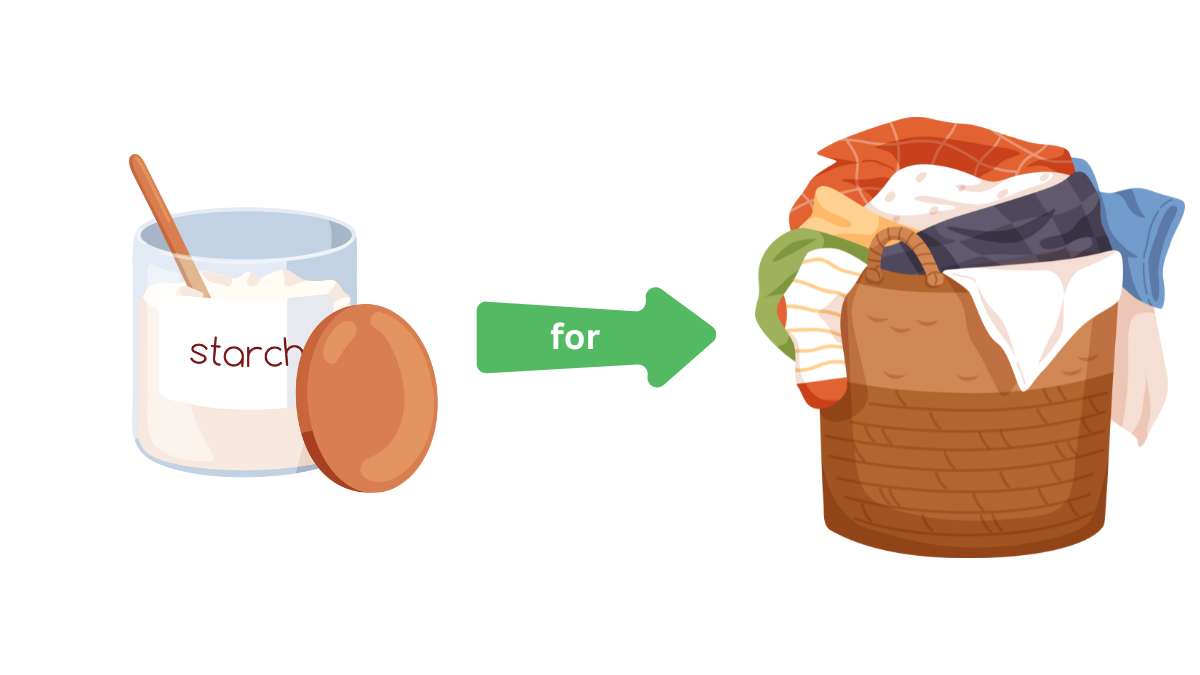
Using starch for clothes is a time-tested method to achieve a crisp, polished look while adding a protective layer that helps fabrics resist wrinkles and stains. Whether you’re preparing formal wear, uniforms, or everyday outfits, proper starching enhances the longevity and appearance of your garments. In this guide, we’ll walk you through the process of using starch effectively, covering everything from wet washing to steam ironing.
Benefits of Using Starch on Clothes
Applying starch to fabrics offers multiple advantages, including:
- Crisp Finish – Starch gives clothes a firm, structured look, perfect for formal attire.
- Wrinkle Resistance – Keeps garments smooth, reducing the need for frequent ironing.
- Stain Protection – Forms a barrier that prevents dirt, sweat, and spills from setting into fabrics.
- Extended Fabric Life – Reduces friction and wear, keeping clothes looking new for longer.
Types of Fabric Starch
Before using starch, it’s essential to choose the right type for your fabric and desired finish:
- Spray Starch – Convenient and easy to apply for light to medium stiffness.
- Liquid Starch – Best for dipping clothes before ironing for a firmer feel.
- Powdered Starch – Can be mixed with water for customizable consistency and stiffness.
Step-by-Step Guide to Starching Clothes
Step 1: Prep Your Clothes with Wet Washing or Dry Cleaning
For the best results, start with freshly cleaned clothes. Whether you opt for wet washing, dry cleaning, or standard laundry, make sure there are no residues or detergent build-up on the fabric, as starch adheres best to clean surfaces.
Step 2: Choose the Right Starch and Prepare It
- If using spray starch, shake the can well and prepare your clothes for ironing.
- For liquid starch, dilute it according to the manufacturer’s instructions.
- If using powdered starch, dissolve it in warm water before application.
Step 3: Apply Starch Evenly
- For spray starch, hold the can about 6-8 inches from the fabric and mist lightly, focusing on collars, cuffs, and other structured areas.
- For liquid starch, soak the garment in the solution, wring out excess, and allow it to dry until damp.
- Ensure an even application to avoid patchy stiffening.
Step 4: Iron with Steam for a Smooth Finish
- Set your steam iron to the appropriate heat level based on the fabric type.
- Begin ironing while the garment is slightly damp for the best results.
- Use smooth, firm strokes to set the starch evenly into the fabric.
Step 5: Store Clothes Properly
- Hang starched clothes to maintain their crisp look.
- Avoid over-starching, as excessive buildup can cause stiffness and premature fabric damage.
Common Mistakes to Avoid When Starching Clothes
- Overusing Starch – Too much starch can make fabric brittle and prone to breaking.
- Not Washing Clothes First – Starch adheres best to freshly cleaned fabrics.
- Skipping Stain Removal – Pre-treat stains before starching, as heat can set stains permanently.
- Ironing with Too Much Heat – High heat can scorch starched fabrics, leading to discoloration.
Final Thoughts
Using starch for clothes is a simple yet effective way to keep your outfits looking sharp and well-maintained. Whether you incorporate it into your regular laundry routine or use it occasionally for steam ironing and dry cleaning, starching can enhance the durability and appearance of your garments.
Looking for more professional laundry care tips? Check out our guides on wet washing, stain removal, and fabric care for expert solutions!

